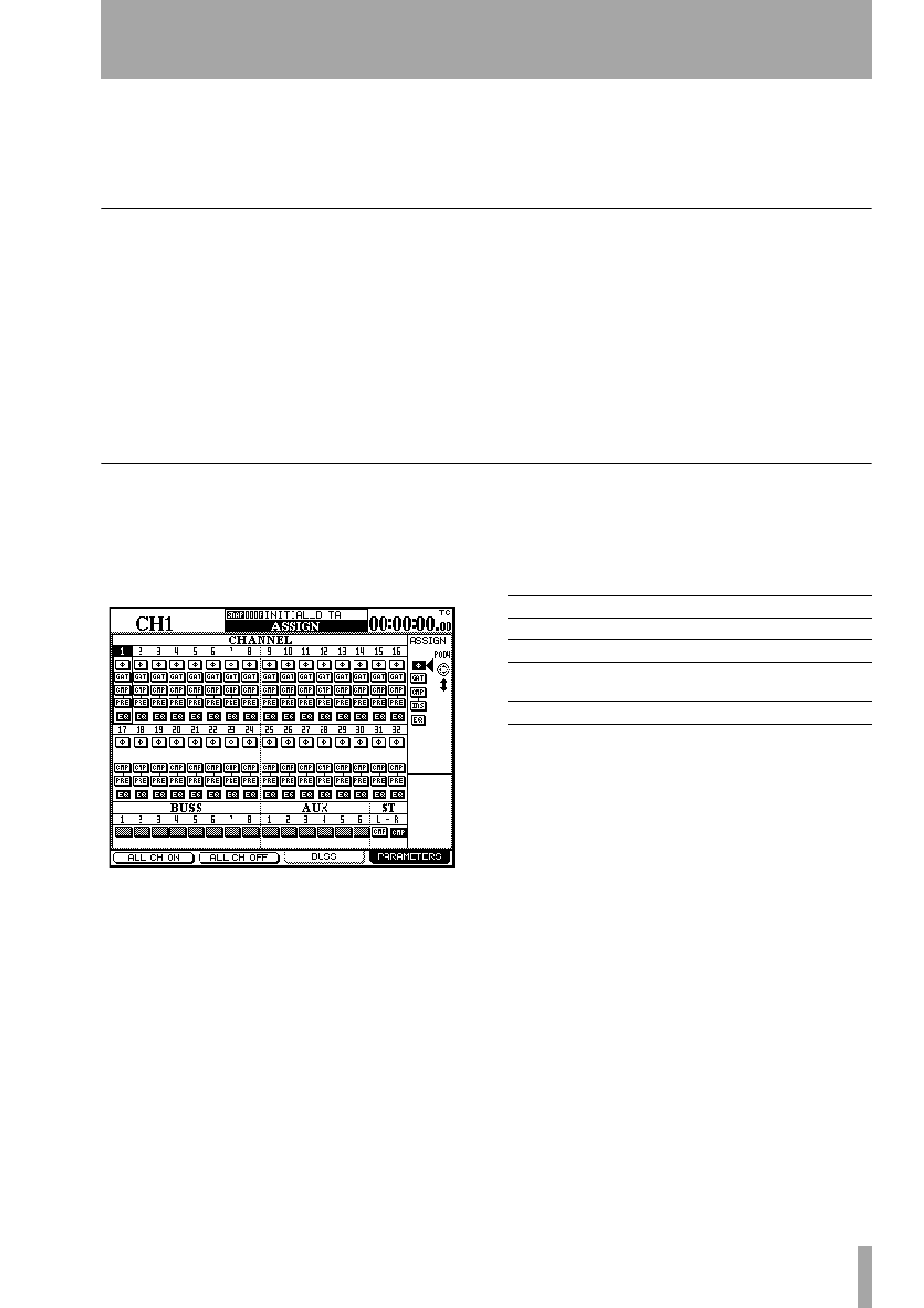Channel-to-buss assignments by channel, Other module parameters – Teac DM-24 User Manual
Page 41

5 – Setting up the I/O—Channel-to-buss assignments (global)
TASCAM DM-24 Reference Manual
41
(
STEREO to AUX1-2 is assigned.
or
AUX1-2 to STEREO is
assigned.
). Press
ENTER
again to dismiss the mes-
sage, then unlink the existing assignment, and retry
the link of the new assignment.
When the link is successfully made, the appropriate
on-screen indicator is reversed.
Channel-to-buss assignments by channel
This method allows the setting of channel-to-buss
assignments per channel.
1
Select a channel using the
FADER LAYER
keys and the
SEL
key of the channel (either
SEL
key if the channel is part of a stereo link
pair).
2
Use the
CH
ASSIGN
keys to the left of the dis-
play to assign and de-assign channels to and
from busses.
If the assignment is not possible (for instance,
no direct out is possible for channels 17
through 32), the appropriate key is disabled.
If either the
MODULE
or the
ASSIGN
screen is dis-
played, changes made to the assignments using these
keys will be reflected in the display.
Other module parameters
Phase, gate on/off, compressor on/off, pre- or post-
EQ compressor location, and EQ on/off can all be set
in the
PARAMETERS
sub-screen of the
ASSIGN
display.
Press soft key 4, or the
ASSIGN
key until this sub-
screen is displayed.
Use POD 4 to select the type of parameter to be
changed, and the cursor keys to move between the
modules, as before.
The parameters selected by POD 4 are:
Note that channels 17 through 32 cannot have a gate
assigned to them.
If a compressor has been assigned to any of the mas-
ter modules (aux or buss or stereo as described in
“Master compressors” on page 43), this will appear
at the bottom of the screen, otherwise, a gray box
will be shown.
Φ
Phase on and off (inverse signifies phase reversal)
GAT
Gate switch on/off (inverse signifies on)
CMP
Compressor switch on/off Inverse signifies on)
INS
Compressor insert point (changes between PRE (pre-
EQ) and PST (post-EQ)
EQ
Turns EQ on and off (inverse signifies on)
